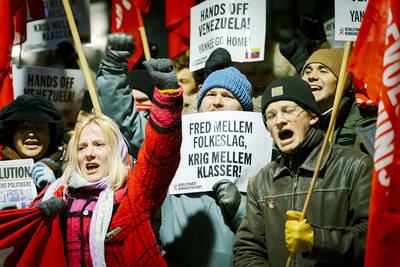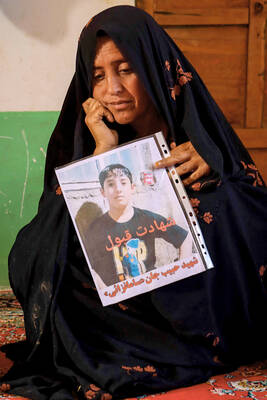The official inquiry into the July 7 bombings in London will say the attack was planned on a shoestring budget from information on the Internet, that there was no "fifth bomber" and that there was no direct support from al-Qaeda, although two of the bombers had visited Pakistan.
The first forensic account of the atrocity that claimed the lives of 52 people, which will be published in the next few weeks, will say that London attacks were the product of a "simple and inexpensive" plot hatched by four British suicide bombers bent on martyrdom.
Far from being the work of an international terror network, as originally suspected, the attack was carried out by four men who had scoured terror sites on the Internet. Their knapsack bombs cost only a few hundred US dollars, according to the first completed draft of the government's definitive report into the blasts.
The Home Office (interior ministry) account, compiled by a senior civil servant at the behest of Home Secretary (interior minister) Charles Clarke, also discounts the existence of a fifth bomber. After the bombings, police found an unused explosive rucksack in the bombers' abandoned car at Luton station, which led to a manhunt for a missing suspect.
Similarly, it found nothing to support the theory that an al-Qaeda fixer, presumed to be from Pakistan, was instrumental in planning the attacks.
A Whitehall source said: "The London attacks were a modest, simple affair by four seemingly normal men using the Internet."
Confirmation of the nature of the attacks will raise fresh concerns over the vulnerability of Britain to an attack by small, unsophisticated groups. A fortnight after July 7, an unconnected group of four bombers tried to duplicate the bombings, but their bombs failed to detonate.
The official Home Office report does, however, decide that the four suicide bombers -- Sidique Khan, Hasib Hussain, Shehzad Tanweer and Germaine Lindsay -- were partly inspired by Khan's trips to Pakistan, though the meeting between the four men and known militants in Pakistan is seen as ideological, rather than fact-finding.
The videotape of Mohammed Sidique Khan released after the attacks also featured Osama bin Laden's deputy, Ayman al-Zawahiri. The Home Office believes the tape was edited after the suicide attacks and dismisses it as evidence of al-Qaeda's involvement.
Khan is confirmed as ringleader of the attacks, though the Yorkshire-born bomber's apparent links to other suspected terrorists are not gone.
The report also investigates the psychological make-up and behavior of the four bombers during the run-up to the attack. Using intelligence compiled in the nine months since, the account paints a portrait of four British men who in effect led double lives. It exposes how the quartet adopted an extreme interpretation of Islam, juxtaposed with a willingness to enjoy a "Western" lifestyle. In particular Germaine Lindsay, the bomber from Berkshire, is described as leading a fast life.
The attacks were largely motivated by concerns over foreign policy and the perception that it was deliberately anti-Muslim, although the four were also driven by the promise of immortality.
Today, the UK's first center for developing techniques to identify and cope with suicide attacks, new biological threats and even roadside bombs will go operational at the government's chemical warfare research establishment at Porton Down, Wiltshire.
Forensic experts, scientists and technological experts will use the most recent intelligence on terrorist weaponry and tactics to devise new defenses as Britain seeks to keep abreast of the evolving threat from the likes of al-Qaeda. In the event of a future attack, forensic material would be sent to Porton Down rather than to the government's forensic explosives laboratory at Fort Halstead, Kent.
Scientists will begin working on designing sophisticated X-ray scanners and robotic appliances to defuse bombs, and researching into how closed-circuit television footage could be used more effectively to identify terrorism suspects.

Indonesia yesterday began enforcing its newly ratified penal code, replacing a Dutch-era criminal law that had governed the country for more than 80 years and marking a major shift in its legal landscape. Since proclaiming independence in 1945, the Southeast Asian country had continued to operate under a colonial framework widely criticized as outdated and misaligned with Indonesia’s social values. Efforts to revise the code stalled for decades as lawmakers debated how to balance human rights, religious norms and local traditions in the world’s most populous Muslim-majority nation. The 345-page Indonesian Penal Code, known as the KUHP, was passed in 2022. It

‘DISRESPECTFUL’: Katie Miller, the wife of Trump’s most influential adviser, drew ire by posting an image of Greenland in the colors of the US flag, captioning it ‘SOON’ US President Donald Trump on Sunday doubled down on his claim that Greenland should become part of the US, despite calls by the Danish prime minister to stop “threatening” the territory. Washington’s military intervention in Venezuela has reignited fears for Greenland, which Trump has repeatedly said he wants to annex, given its strategic location in the arctic. While aboard Air Force One en route to Washington, Trump reiterated the goal. “We need Greenland from the standpoint of national security, and Denmark is not going to be able to do it,” he said in response to a reporter’s question. “We’ll worry about Greenland in

PERILOUS JOURNEY: Over just a matter of days last month, about 1,600 Afghans who were at risk of perishing due to the cold weather were rescued in the mountains Habibullah set off from his home in western Afghanistan determined to find work in Iran, only for the 15-year-old to freeze to death while walking across the mountainous frontier. “He was forced to go, to bring food for the family,” his mother, Mah Jan, said at her mud home in Ghunjan village. “We have no food to eat, we have no clothes to wear. The house in which I live has no electricity, no water. I have no proper window, nothing to burn for heating,” she added, clutching a photograph of her son. Habibullah was one of at least 18 migrants who died

Russia early yesterday bombarded Ukraine, killing two people in the Kyiv region, authorities said on the eve of a diplomatic summit in France. A nationwide siren was issued just after midnight, while Ukraine’s military said air defenses were operating in several places. In the capital, a private medical facility caught fire as a result of the Russian strikes, killing one person and wounding three others, the State Emergency Service of Kyiv said. It released images of rescuers removing people on stretchers from a gutted building. Another pre-dawn attack on the neighboring city of Fastiv killed one man in his 70s, Kyiv Governor Mykola